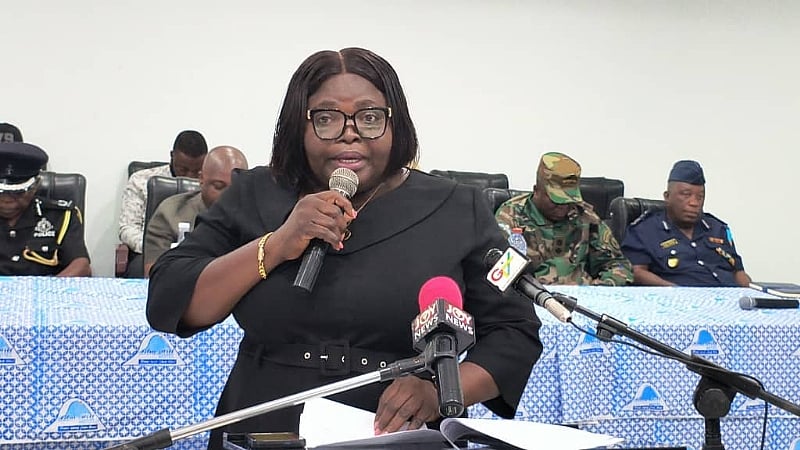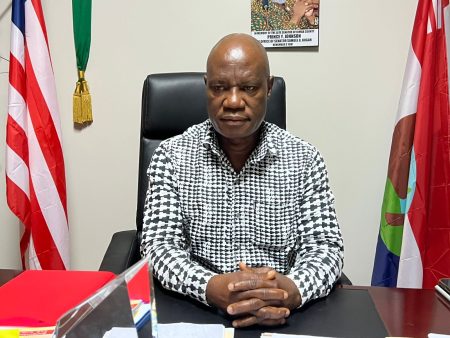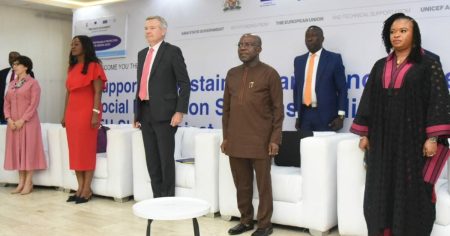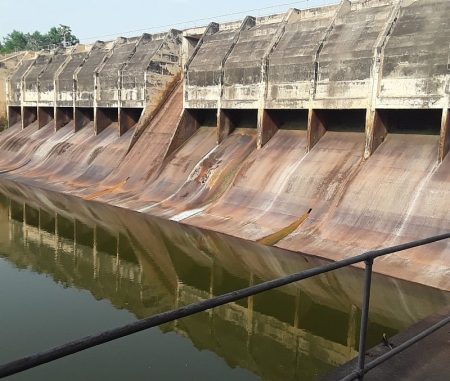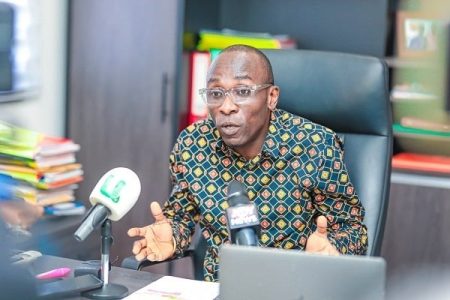District Chief Executive’s Report Paints a Picture of Progress and Challenges in Nadowli-Kaleo
The District Chief Executive (DCE) for Nadowli-Kaleo, Hon. Mary Haruna, presented a comprehensive overview of the district’s current state during the Regional Coordinating Council (RCC) meeting held in Wa on Tuesday, September 9, 2025. Her report highlighted a mix of positive developments, persistent challenges, and untapped potential, providing a nuanced picture of the district’s trajectory.
Security Situation: Largely Calm, but Concerns Remain
Hon. Haruna described the security situation in Nadowli-Kaleo as generally peaceful, although specific incidents have raised concerns. A significant event was the interception of a smuggling attempt near the Black Volta River at Zupri on July 16. A Ghana Immigration Service patrol team, with support from NADMO and local youth, successfully secured 250 drums of sodium cyanide destined for illicit purposes. Investigations into this concerning incident are currently underway. Another security concern revolved around tensions between Azumah Resources Ghana Ltd. and local youth. The DCE reported that these tensions, which escalated two months prior, have since de-escalated thanks to the mediation efforts of the District Security Council. Both parties have been urged to uphold their commitments to maintain peace and stability in the area, crucial for fostering a conducive environment for development.
Development Projects: A Mixed Bag of Progress and Delays
The DCE’s report on development projects revealed a combination of completed initiatives, ongoing works, and projects still in the planning stages. Notable achievements include the rehabilitation of the Goli-Kaabogu feeder road, significantly improving transportation access for communities in that area. The upgrading of the St. Augustine SHS football field at Charikpong provides enhanced sporting facilities for students and the community. Spot improvements on the Loho Junction–Nabuku feeder road have also contributed to better transportation infrastructure. However, several projects face delays. The Gbankor earth dam, a crucial water resource project, is currently only 50 percent complete. The Kpaala-Kuuri feeder road, another important transportation link, has reached 40 percent completion. Other vital projects, including CHPS compounds at Chaang and Vogoni, and classroom blocks at Kpaala and Chaang, are still in the procurement stage, awaiting the necessary processes to commence construction.
Economic Potential: Untapped Opportunities Beckon Investors
Hon. Haruna emphasized the district’s significant economic potential, highlighting opportunities for growth and investment. The anticipated full-scale operations of Azumah Resources Ghana Ltd. are projected to create numerous jobs and boost revenue for the district. The DCE also drew attention to the district’s vast arable lands, suitable for diverse agricultural activities. The presence of dams along the Black Volta River offers substantial potential for irrigation projects, enhancing agricultural productivity. Abundant Shea and Dawadawa trees represent valuable resources for agro-processing industries, creating further economic opportunities. Beyond agriculture, Hon. Haruna highlighted the potential for tourism development. Untapped tourist sites such as Ombo Wura offer unique attractions that could be developed to attract visitors and generate revenue. She encouraged investors to explore these diverse opportunities and contribute to the district’s economic growth.
Challenges: Chieftaincy Disputes, Inadequate Resources, and Environmental Threats
Despite the promising prospects, the DCE acknowledged persistent challenges that hinder the district’s progress. Unresolved chieftaincy disputes continue to drain resources and impede development initiatives. These disputes often lead to protracted conflicts, diverting attention and resources away from crucial development projects. The district’s security apparatus also faces resource constraints. With only 54 police personnel against a required 100, maintaining law and order and ensuring the safety of citizens remains a significant challenge. The deteriorating condition of the Wa–Nadowli–Kaleo highway poses a major obstacle to transportation and economic activity. The poor state of the road increases transportation costs, limits access to markets, and hinders the movement of goods and people. Finally, the resurgence of illegal alluvial mining along the Black Volta River presents a serious environmental threat. This activity poses significant risks to water bodies, farmlands, and the livelihoods of communities dependent on these resources.
Call for Action: Urgent Interventions Needed for Sustainable Growth
In her concluding remarks, Hon. Haruna appealed for urgent interventions to address the challenges facing Nadowli-Kaleo. Resolving chieftaincy disputes requires concerted efforts from traditional authorities, government agencies, and community leaders to find peaceful and lasting solutions. Addressing the shortage of police personnel and providing them with adequate resources is crucial for maintaining security and stability. Rehabilitating the Wa–Nadowli–Kaleo highway is essential for facilitating trade, improving access to services, and promoting economic development. Combating illegal mining activities requires stricter enforcement of environmental regulations and community engagement to raise awareness about the detrimental impacts of this practice.
Looking Ahead: Harnessing Resources for a Brighter Future
The DCE reaffirmed the district’s commitment to harnessing its vast resources for sustainable growth and development. By addressing the existing challenges and capitalizing on the available opportunities, Nadowli-Kaleo has the potential to achieve significant progress in improving the lives of its citizens and contributing to the overall development of the region. The DCE’s report served as a call to action for stakeholders to collaborate and work towards a brighter future for the district.





